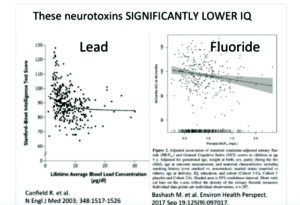While the New Zealand Ministry of Health remains silent on a landmark, multi-million-dollar, US Government funded study (Bashash et al), and the Minister of Health continues to claim safety based on out-dated advice, fluoride promoter Ken Perrott has sought to discredit the study via his blog posts and tweets.
Perrott claims that the results were not statistically significant but his analysis is incorrect.
The conclusion by the authors of this study, which was published in the top environmental health journal, Environmental Health Perspectives, was:
“In this study, higher prenatal fluoride exposure, in the general range of exposures reported for other general population samples of pregnant women and nonpregnant adults, was associated with lower scores on tests of cognitive function in the offspring at age 4 and 6–12 y.”
Perrott states the study has “a high degree of uncertainty”. But this contrasts with the statistical analysis and conclusion of the team of distinguished neurotoxicity researchers from Harvard, the University of Toronto, Michigan and McGill. These researchers have written over 50 papers on similar studies of other environmental toxics like lead and mercury.
RESULTS: In multivariate models we found that an increase in maternal urine fluoride of 0.5 mg/L (approximately the IQR) predicted 3.15 (95% CI: −5.42, −0.87) and 2.50 (95% CI −4.12, −0.59) lower offspring GCI and IQ scores, respectively.
The 95% CI is the 95% Confidence Interval which is a way of judging how likely the results of the study sample reflect the true value for the population. In this study, the 95% CIs show the results are highly statistically significant. They give a p-value of 0.01 which means if the study were repeated 100 times with different samples of women only once could such a large effect be due to chance.
Perrott comes to his wrong conclusion because he has confused Confidence Intervals with Prediction Intervals and improperly used Prediction Intervals to judge the confidence in the results. A Prediction Interval is used to judge the confidence one has in predicting an effect on a single person, while a Confidence Interval is the proper measure to judge an effect on a population. In epidemiological studies, it is the average effect on the population that is of interest, not how accurately you can predict what will happen to a single person.
Despite the authors controlling for numerous confounders, Perrott claimed they did not do a very good job and had inadequately investigated gestational age and birth weight.
Once again Perrott makes a fundamental mistake when he says that the “gestational period < 39 weeks or > 39 weeks was inadequate” and “The cutoff point for birth weight (3.5 kg) was also too high.”
Perrott apparently did not understand the Bashash paper and mistook what was reported in Table 2 with how these covariates were actually treated in the regression models. The text of the paper plainly states:
“All models were adjusted for gestational age at birth (in weeks), birthweight (kilograms)”
Thus, each of these two variables were treated as continuous variables, not dichotomized into just two levels. Perrott’s criticism is baseless and reveals his misunderstanding of the Bashash paper.
Perrott states that the results are not relevant to countries with artificial fluoridation because it was done in Mexico where there is endemic fluorosis. But Perrott is wrong. The study was in Mexico City where there is no endemic fluorosis. Furthermore, the women’s fluoride exposures during pregnancy were in the same range as found in countries with artificial fluoridation such as New Zealand.
The study reports that for every 0.5 mg/L increase of fluoride in the urine of the mothers there was a statistically significant decrease in average IQ of the children of about 3 IQ points. It is therefore correct to say that a fluoride level in urine of 1 mg/L could result in a loss of 5 – 6 IQ points. This is particularly relevant to the New Zealand situation where fluoridation is carried out at 0.7 mg/L to 1 mg/L and fluoride urine levels have been found to be in this range.
There is no excuse for Health Minister, David Clark, to continue to bury his head in he sand. This level of science demands that the precautionary principle be invoked and fluoridation suspended immediately.
Update 29th March 2018
Ken Perrott responded to the above article on Health Central. Although, he dropped some of his claims, he then claimed that the study was not relevant because of variance. However, he is wrong about that too. See our response Fluoridation Defender Ken Perrott is Wrong Again .

